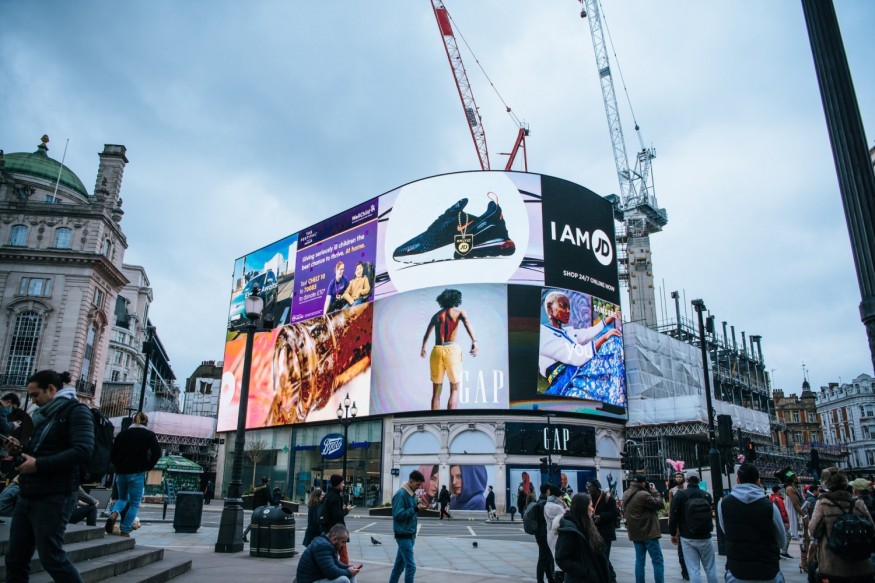
The digital signage industry is booming, and with good reason. The signs are cheap, the hardware is plentiful, and Apple TV digital signage software is easier to use than a Smartphone or modern tablet. Only now are we seeing a true innovative use of the signs as more and more people adopt them and integrate them into their businesses.
The 3D Signs in Hong Kong and Tokyo
They may look like very large cinema screens that bend at a right angle, but they are made up of smaller signs placed together and acting as one. If you think about it, why spend hundreds of thousands on a massive screen that sometimes bends at an angle, when they can plaster their walls with cheaper regular sized signs and have them bend in a curve if they wish.
(Photo : Cat Billboard)
Putting the signs at an angle allows them to create visual illusions. In this case, people's eyes follow the lines of the building and onto the signs, and assume the images are coming out of the sign as true 3D holograms.
McDonalds Using Digital Signs Menus
Consultancies have made it very clear that they support the use of digital sign interactive menus, with many of the big named consultancies claiming that McDonalds is now at the forefront of technology and innovation in the QSR (Quick Service Restaurant) market because of their use of signs.
(Photo : Pickel.com)
If you think about it, this system is actually better than a Smartphone ordering system. You get a far firmer control over people's experience. It is not like with their phone where they only see a small image of your food, where they have to scroll down to find things, and where the experience is dependent upon them having a good Internet connection and/or a good phone. Digital menu signs also completely eliminate the need to wait in a line to bark your order at a half-interested teen as she or he paddles the food pictures with his/her palm (there are pictures of food on the touchscreen till). You simply make your order, pay, have your number printed out, and then wait for your number to be called. It is such a brilliant move for a QSR that you have to wonder why nobody has ever thought of it before.
Interactive Digital Sign Maps in New Zealand
The premise is pretty simple. Instead of having the stationary maps that say "You are here," they have interactive ones where you press on your intended location and tell you which direction to walk.
But wait a minute, why is this innovative? Well, take a look at any mall map and it isn't always obvious where you need to walk in order to get where you are going.
(Photo : Savannah Mall)
In almost every case, the user still has to look around for stores and shops nearby in order to figure out which direction to walk. What is worse is that there are signs that don't have the store names on them and just numbers. This means even more "Figuring out" time in order to get somewhere, all of which is wasted shopping time. With a digital sign, people can press on their desired shop, parking lot, food court or toilet area, and the map points in the correct direction.
Furthermore, people need not rely on numbers to identify shops, and they can even type in their desired store or location to find it without having to search. The New Zealand signs also come with all the expected quality of life enhancements, such as auto-fill and auto-correct when people are typing things into the sign. And things like QR codes that allow people to transfer the map onto their phones, which also allows for push notification about store-specific brands. Seamless tech integration into the offline shopping scene has been a long time coming, but it is finally here.
© 2025 ScienceTimes.com All rights reserved. Do not reproduce without permission. The window to the world of Science Times.












